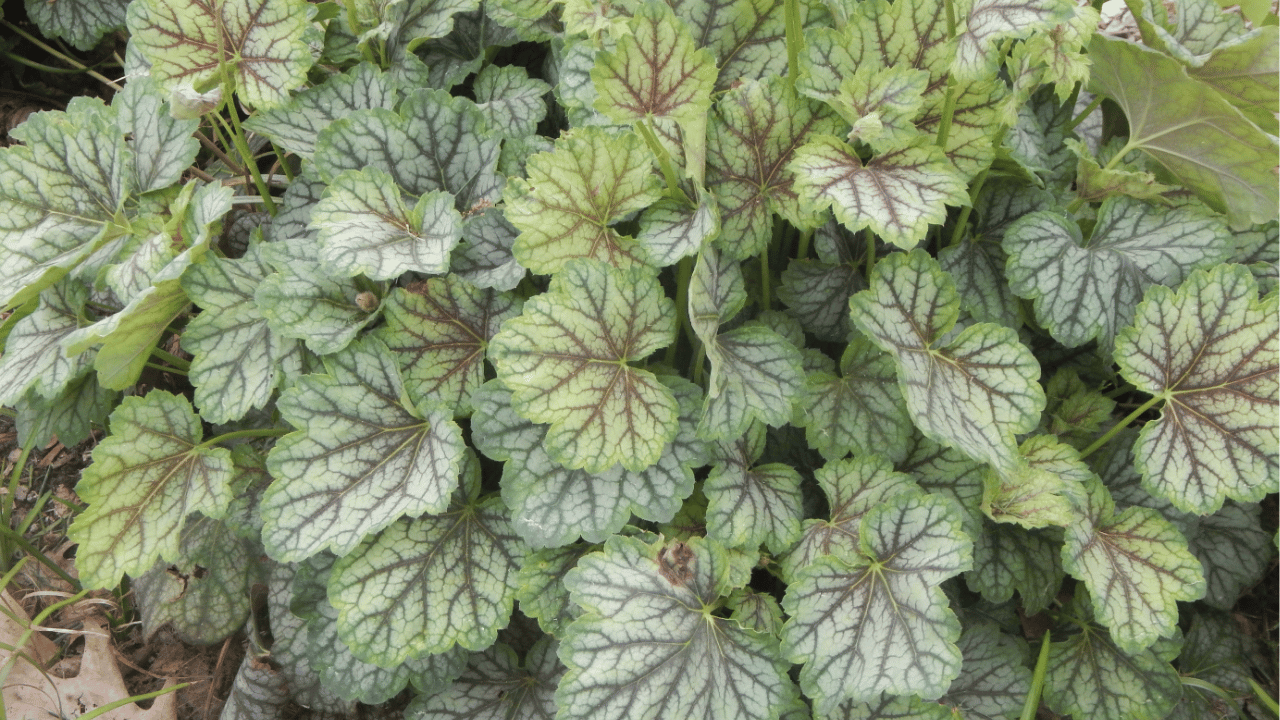Coral Bells (Heuchera) are a delightful addition to any garden, known for their vibrant foliage and seasonal blooms. Although relatively low-maintenance, they thrive best with specific care. Understanding their needs ensures they flourish, adding color and texture to your garden year-round. Here are 10 tips to keep your Coral Bells healthy and happy.
1. Choose the Right Location
Coral Bells prefer partial shade, although some varieties can tolerate full sun. Plant them where they receive morning sunlight and afternoon shade for the best foliage color and overall health.
Avoid placing them in areas with harsh afternoon sun, as this can cause leaf scorch. Well-drained soil is crucial because they don’t tolerate standing water, which can lead to root rot.
2. Water Regularly but Don’t Overwater
Coral Bells require consistently moist soil, especially during their first growing season. Water them deeply once a week, and adjust based on the weather. In hot, dry conditions, increase watering, but avoid letting the soil become soggy.
Mulching helps retain moisture while preventing weed growth, but ensure it doesn’t touch the plant crown to prevent rot. Overwatering can lead to fungal issues, so ensure proper drainage.
3. Provide Proper Soil Conditions
Well-draining soil is key for Coral Bells, as they dislike sitting in water. Sandy or loamy soil mixed with organic matter like compost provides the right balance of drainage and nutrients.
Avoid heavy clay soils, or amend them with organic materials to improve aeration. Coral Bells benefit from slightly acidic to neutral pH, between 6.0 and 7.0, which helps them absorb nutrients efficiently.
4. Prune Spent Flowers and Dead Leaves
Pruning spent blooms and dead leaves encourages new growth and maintains the plant’s aesthetic. Use sharp, sterilized scissors to cut back any damaged or discolored foliage.
In late fall, remove old, faded flower stalks to direct energy into the root system over winter. Regular pruning also improves air circulation around the plant, reducing the likelihood of disease.
5. Divide Every 3-4 Years
Coral Bells benefit from division every three to four years to prevent overcrowding and maintain their vigor. Early spring is the ideal time for dividing before the new growth fully emerges.
Carefully dig up the plant, separate the root ball, and replant the divided sections. This process rejuvenates the plant and provides more space for healthy growth, promoting a fuller, more vibrant display.
6. Fertilize Lightly
While Coral Bells are not heavy feeders, a light application of balanced fertilizer in early spring boosts their growth. Use a slow-release granular fertilizer or an organic option like compost tea to nourish the soil.
Avoid over-fertilizing, as too much nitrogen can lead to leggy growth and reduce the intensity of foliage color. Once a year is typically sufficient for maintaining healthy plants.
7. Protect from Frost Heaving
In colder climates, Coral Bells are susceptible to frost heaving, where repeated freezing and thawing pushes the plant out of the ground. Apply a thick layer of mulch (around 2-3 inches) in late fall to insulate the roots and prevent this.
Check periodically during winter, and if frost heaving occurs, gently push the plant back into place and add more mulch for protection. This ensures the plant’s roots remain stable and secure.
8. Watch for Pests and Diseases
Although relatively pest-resistant, Coral Bells can fall prey to common garden pests like vine weevils and aphids. Inspect the leaves regularly for signs of damage, and use neem oil or insecticidal soap if necessary.
Ensure proper spacing between plants to allow air circulation, which helps prevent diseases like powdery mildew. Removing affected foliage quickly helps stop the spread of any issues before they become severe.
9. Choose Varieties Suited to Your Climate
Different Coral Bells varieties thrive in different conditions, so selecting the right one for your climate is essential. Heuchera ‘Caramel’ is more tolerant of heat, while Heuchera ‘Green Spice’ is better suited to cooler temperatures.
Research which varieties work best in your region to ensure long-term success. Choosing climate-appropriate varieties reduces stress on the plant and promotes more robust growth throughout the year.
By following these essential care tips, your Coral Bells will thrive, offering year-round beauty with minimal effort. With just a bit of attention, these stunning perennials can be a vibrant and lasting feature in your garden.

